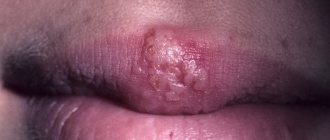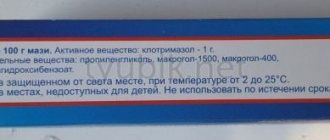Is it possible to pull with thread?
Before carrying out the procedure, you need to make sure that it is really a papilloma or wart. A dermatologist will help clarify the question after collecting an anamnesis, laboratory tests, and examination with a dermatoscope.
The presence of neoplasms depends on the state of immunity, existing diseases of internal organs, and injuries. Papillomavirus can be cured after eliminating the listed factors. Mechanical removal will not eliminate the problem, but will help correct the cosmetic defect of the skin.
The above removal method is suitable for types of papillomas: flat, hanging (pedunculated). It is undesirable to pull rounded (vulgar), pointed, plantar warts and condyloma.
Advantages of the method: no monetary costs are required, relative painlessness.
Traditional medicine does not recommend getting rid of tumors using this method due to the risk of consequences:
- injuries to a mole, mistaken for a papilloma, promoting degeneration into malignant tumors, melanoma;
- inflammation of the skin, infection of the body;
- scars, scars;
- re-formation of the growth.
Removing nevi at home by pulling is prohibited.
Prevention
People say: prevention is better than cure. To avoid having to choose between hair and laser, you need to constantly pay attention to your body, examining the areas of the body where insidious growths most often appear.
It is necessary to prevent skin irritation from neck jewelry and items of underwear.
Microtraumas are a free entrance for papillomavirus.
On medical forums there are a huge number of reviews about the successful use of traditional methods of getting rid of papillomas, including the method of tying the growth with thread. If it is used by a patient who has previously undergone medical examination, there is reasonable hope of success.
Removing papillomas with thread is a fairly popular, but far from the safest method of dealing with unaesthetic growths on the skin. Papillomas are formed due to damage to the epithelial layer of the skin by the human papillomavirus (HPV). Infection occurs through household means or during sexual intercourse.
Which thread to choose
Need advice from an experienced doctor?
Get a doctor's consultation online. Ask your question right now.
Ask a free question
Suitable threads for removal include silk, cotton, surgical thread from an emergency kit, or horsehair. The use of dental floss is optimal; the product is durable and treated with an antiseptic.
The main requirement is that the rope must be strong, thin, and must be treated with an antiseptic.
Types and locations of growths
If you decide to bandage a papilloma with a thread, then try to understand the anatomy of its structure.
As a rule, formations are:
- Papillomas on the leg. That is, they are not tightly attached to the skin, they are located “in the air” and only a separate part is connected to the human body. Such formations are the easiest to remove.
- Dense, in contact with the skin. Warts in their essence resemble an outgrowth of fibrous tissue, are tightly attached to the skin, and attempts to somehow influence the papilloma cause pain.
These are the main types of formations, the emergence of which has become established by HPV. Doctors also distinguish them by their appearance, which influences the classification.
There are genital warts, vulgar and flat warts, and filamentous papillomas. There are growths that appear on the mucous membranes of the respiratory organs (trachea, larynx) and bladder.
- flat warts are localized in different areas of the skin;
- vulgar warts can often be found on the extremities;
- genital warts affect the genitals;
- thread-like growths appear on different parts of the body.
How to properly tie a papilloma with thread
Step-by-step dressing instructions:
- Carry out hygiene of the problem area of the skin, wash with soap. Treat the skin with an antiseptic (alcohol). Disinfect the silk thread.
- Tie a thread at the base of the tumor, as close as possible to healthy tissue. You can tighten the loop. There is no need to cut the papilloma, this will lead to injury and infection.
- Trim the ends of the thread with scissors treated with alcohol (for the purpose of disinfection).
- Apply a sterile bandage if the tumor rubs against clothing. Remove at night. During the procedure, wear clothes made from natural fabrics and avoid friction. Avoid visiting public places (bathhouse, sauna, swimming pool).
- Change the thread periodically as needed, tie it closer to the base of the skin.
- After 5-7 days, the tumor will fall off on its own. Daily inspection of the damaged area is necessary. If the patient is bothered by pain, itching, or swelling during the procedure, then the removal procedure must be stopped and another method used.
- After the specified time has elapsed, untie the knot and remove the rope.
- After the papilloma has dried and fallen off, it is necessary to treat the skin with antiseptics and wound-healing ointments. Do not apply decorative cosmetics until complete healing.
It is not allowed to cover the damaged area with a plaster or bandage it. There must be air access to the skin.
Other removal methods:
- For the procedure you will need a silk thread and fresh potatoes (1 piece). A knot is formed and the growth is tied. The potatoes are cut in half and a string is placed between the halves. Buried in the ground. It is believed that the formation will disappear when the potato rots.
- Requires red silk thread. On the day of removal there should be a new moon in the sky. Nodules are formed, the number should match the warts. After this, the thread is buried in the ground. When it rots, the growths will go away.
- Rub the wool thread with raw meat and bandage the papilloma. Remove and bury at the crossroads of three roads. When the thread rots, the papilloma will disappear. Removal is carried out on the waning moon.
These methods are harmless and can be used without harm to health. You need to believe in a cure, otherwise the methods are ineffective. Disappearance is indicated by blackening and changes in the structure of the neoplasm (roughness).
To make the growths go away faster, you should not tell anyone about the presence and treatment of papilloma.
Advantages and disadvantages of the method of removing papillomas with threads
Removing skin growths with a thread is a way to combat the disease, causing very mixed reactions among specialists. When asked whether it is possible to bandage a papilloma, they answer very differently. Thus, supporters of traditional medicine argue that a tumor tied with a thread is deprived of its blood supply and dies over time. In their opinion, pathological cells cannot reproduce without food and oxygen.
However, doctors do not agree with this approach; they are sure that papillomas should not be pulled over under any circumstances. Experts explain their position as follows:
- After such manipulation, the skin under the tumor often becomes inflamed. In addition, there is a risk of infection of the epithelium.
- Unauthorized removal of tumors can provoke the development of a cancerous tumor. The most dangerous thing is to bandage growths in the genital area and on the mucous membranes, since malignant neoplasms most often occur in these areas.
It should be remembered that HPV has many varieties, and while some of them are relatively safe, others belong to groups of medium and high oncogenic risk. Only a doctor can determine what type of virus a person is infected with after conducting a PCR test.
If the patient has a high risk of developing cancer, then self-treatment of growths is strictly prohibited. Excision of papilloma without serious consequences can only be done in a clinic using surgical or hardware methods, as well as through the use of medications prescribed by a doctor.
Traditional medicine methods
There are many free ways to get rid of a common disease using “grandmother’s recipes.”
Treatment with iodine
Small papillomas can be cured within a short period of time (up to 2 weeks).
When cauterizing papillomas, you must follow the following rules:
- Remove growths only after consulting a specialist.
- Be careful not to damage healthy tissue around the papilloma.
- Carry out procedures regularly so as not to delay the desired result.
Removal of growths is carried out in the following sequence:
- 10 minutes before treatment, the affected areas of the skin are washed and dried.
- Using a cotton swab soaked in iodine, cauterize the top of the papilloma and leave for 30 seconds.
- In filiform papillomas, the stem of the growth is lubricated.
Removal with celandine
Juice is squeezed out of fresh, crushed celandine. The extract is prepared by evaporation. Using a cotton swab, apply the substance to the papillomas 4-5 times daily in 3 doses with an interval of 2 minutes.
At the same time, to cleanse the body, microenemas from celandine prepared according to the recipe are recommended:
50 g of celandine, twisted through a meat grinder, is poured into 500 ml of boiling water. After four hours of infusion, you can make microenemas, holding the infusion in the intestines for up to 30 minutes. For a lasting positive effect, up to 20 procedures are required.
If the papilloma turns black
As a result of successful therapy, the tumors become black. This means that cells affected by the virus die. It also happens that papillomas spontaneously change without outside intervention. They may become red and inflamed, blackened, or painful.
Such changes can occur as a result of stress, taking hormonal medications or sunburn. And this is not an empty reason for concern, but a reason to visit a specialist who can competently determine the degree of danger.
Risk of degeneration into cancer
Research has proven that papilloma causes the development of cancer. Most often it develops into cancer in women (although there is such a danger for men too). Especially often in these cases, oncological diseases are localized in the mammary glands and in the cervix.
Traditional removal methods
Now, we need to focus more specifically on the methods used in traditional medicine. Among them are the main ones:
- Cauterization using celandine extract.
- Using tea tree oil.
- Removal with aloe and kalanchoe.
- Using crushed garlic.
- Bandaging papillomas with thread.
Moxibustion using celandine extract
These are not all methods of removing papillomas, but they are the most used. The only thing that should not be done under any circumstances is to rip off the papilloma and then treat the wound with alcohol or brilliant green. It is only allowed to treat the wound with hydrogen peroxide, and only in cases where the formation has fallen off accidentally (caught on clothing, hand, etc.).
This extract can be purchased at any pharmacy, without a doctor’s prescription, since it is intended for cauterization of various types of skin formations. You should act according to the instructions for use of the extract.
The second way to use celandine is to collect the leaves of celandine in the summer, which grows in relatively environmentally friendly places, the farther from big cities and highways, the better, and squeeze the juice out of it. Then regularly apply the juice to the papilloma (wart).
The third method is to crush the leaves of celandine and apply them to the previously steamed affected area of the skin at a convenient frequency. With this treatment method, the wart disappears after a week.
Using tea tree oil
Everyone knows that tea tree oil is widely used in cosmetology and medicine. It helps us fight many viruses and bacteria on the skin. Acts directly on the infection. The recipe for use is simple. We apply oil to the papilloma every day and wait for it to disappear. This process is not very fast, but it is effective and there is no need to bandage anything.
Removal with aloe and kalanchoe
For this method, leaves of plants that are five years old or older are used. You need to cut the leaves thinly. It is best to use a blade, apply it to the papilloma and fix it. Usually fixed with adhesive tape. A similar compress is worn for a week, several hours a day. The patch should be tied tightly so that it adheres tightly to the affected area.
Using crushed garlic
The garlic must be finely chopped and mixed with starch or flour. Then, apply the resulting mixture to the papilloma and stick it with an adhesive plaster (you need to wrap it on top with a bandage so that the compress is tightly attached), for no more than 2-3 hours. After removing the compress, the skin should be rinsed with water. This method will help with regular use for 1-1.5 months.
All of the above methods are suitable and can help. But, they all require a certain kind of effort that is not related to the fact that you need to tie the threads. At a minimum this is:
- going to the pharmacy;
- purchase of tinctures;
- purchasing an adhesive plaster;
- regularity of compresses.
What to do if you don’t even have time for this? The question constantly arises, how can you become beautiful with minimal time spent on procedures, without going to the doctor, and without using something regularly? This is where the method that our great-grandmothers used from time immemorial comes to the rescue.
How is the procedure performed?
Before you proceed to remove papilloma with thread, you need to think about all the possible risks and consequences and prepare well. You should not do this if your immune system is weakened, for example, after an illness.
If you still decide to bandage the papilloma with hair or thread yourself, you must adhere to the following recommendations. They describe step by step the process of how to tie a formation with thread. According to reviews, this is the method that gives the desired effect.
- Before tying with thread, the area where the growth is located must be treated with an antiseptic, iodine or alcohol.
- The thread for dressing, be sure to be silk or cotton, should also be moistened with an antiseptic before removing the papilloma.
- Holding the manifestation of papillomatosis with your fingers, pry the growth with a loop of thread and tie it at the very base, tighten it. Trim the ends with scissors and wipe the treated area with an antiseptic on top again.
- Under no circumstances should a papilloma be tied out of a thread until it falls off on its own.
When they talk about removing papillomas using a thread, it is necessary to clarify which method is meant:
- Direct impact method, in which the thread is tied directly to the stem of the formation;
- Method of indirect influence. This is an unconventional method that is aimed more at the power of the subconscious.
For some, these methods may seem at least unusual, but it is worth saying that quite a large number of people have resorted to them over the years.
If a person nevertheless decides to remove papillomas with a thread by pulling them, then he needs to know that this method has its own list of contraindications. These include:
- Existing inflammation in close proximity to the growth;
- Oncological nature of papilloma or suspicion of it;
- The location of papillomas on the mucous membranes, for example, in the genital area.
If there are no contraindications listed above, then in general you can try this method. But if there is any doubt, it is better to consult a doctor. This will be the most correct option.











